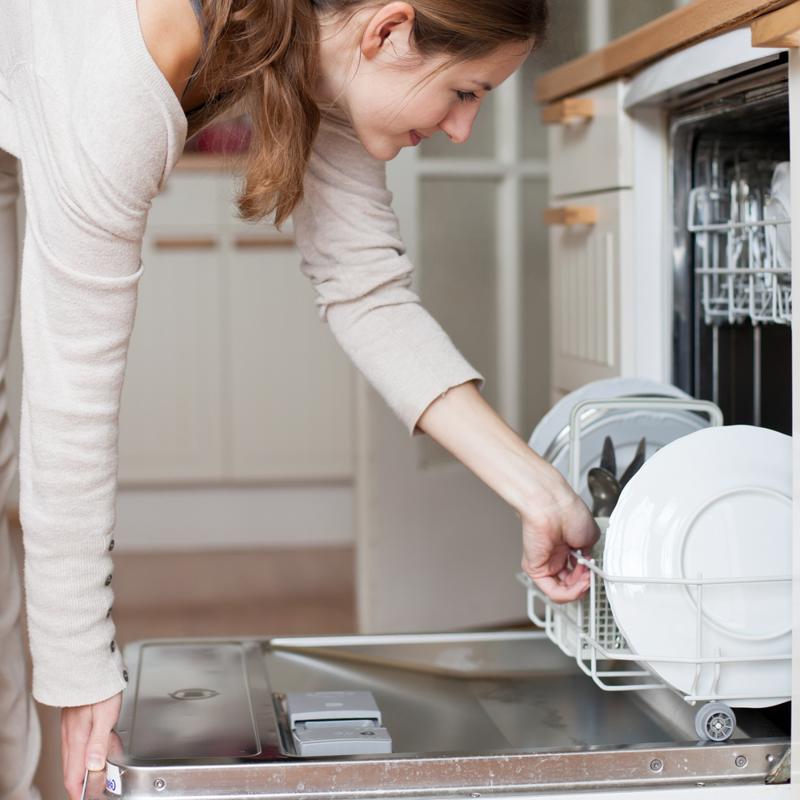If you fail to properly maintain your home appliances and systems, such as your washing machine, dishwasher and fridge, mold can quickly begin to form. In the summer, this risk drastically rises, as humidity increases the rate at which mold spores and mildew grow. And aside from the fact that it can mess with the functionality of your home, it can have harmful effects on your health when breathed in, especially if you or a family member has an allergic reaction to it.
Protect your home and family from mold buildup and ensure your systems are functioning efficiently with these maintenance tasks:
"Indoor humidity levels should be between 30-50%."
Clean your fridge regularly
According to Energy Star, indoor humidity levels should be between 30-50 percent; otherwise, mold and mildew can easily grow on everything from your walls to your home appliances. During hot and humid summer days, maintaining these levels can be difficult. But that’s why it’s especially important to actively prevent bacterial growth on major appliances, such as your refrigerator.
Take out all removable parts, such as trays and drawers, and allow them to soak in a mixture of warm water and one cup of baking soda. If any of these components are already covered in mold, soak them in warm water and 2 cups of vinegar prior to rinsing them in baking soda as well. Then, rinse them with water and dry them completely.
Distilled white vinegar – which is eco-friendly and doesn't have any harmful side effects – should be used to scrub the shelves and surfaces. Once the entire interior has been wiped down, rinse it with water. This process will rid the interior of mold and help eliminate any musky odors caused by mildew. From then on out, try to wipe down your appliance every so often to prevent mold from forming again.
Run your dishwasher on an empty cycle
If you notice mold growing in your dishwasher, start by removing the filter and soaking it in water mixed with soap. Leave it soaking for about 10 minutes before putting it back inside. Pour one cup of white vinegar into the bottom of the appliance and turn on the heaviest cycle without any dishes inside. Once this is done, sprinkle baking soda into the bottom and leave it there overnight. In the morning, turn on another heavy rinse cycle. This will have your dishwasher smelling great and make it mold-free.

Open the dishwasher door after each use, allowing it to dry completely before closing to help prevent mold growth.
Dry your washing machine
Another home appliance that's easily impacted by mold is your washing machine. At the end of each cycle, everything from your door gasket and tub strainer to your drain hose remain damp. This increases the risk of bacterial growth, particularly in the summer when humidity creates extra moisture in the air. The tub strainer and gasket are the two parts of the machine that are most accessible and, therefore, should be dried with a towel after each cycle. If the humidity levels are high, consider placing a pedestal fan near the open washer door. You can also run a preventative maintenance wash cycle to reduce the risk of bacterial growth about once per month.
As you perform these maintenance tasks to eliminate mold on your home appliances, keep an eye out for warning signs of a breakdown from wear and tear. The summer heat and humidity can cause maintenance issues other than mold buildup. The good news is, a Cinch Home Protection Plan will ensure you have everything you need to get your repairs or replacements taken care of when needed.
<hr />
<p><em>The information in this article is intended to provide guidance on the proper maintenance and care of systems and appliances in the home. Not all of the topics mentioned are covered by our home warranty or maintenance plans. Please review your home warranty contract carefully to understand your coverage.</em><br />
</p>